Special Report
They’re Not Really White and 19 Other Fascinating Facts About Polar Bears
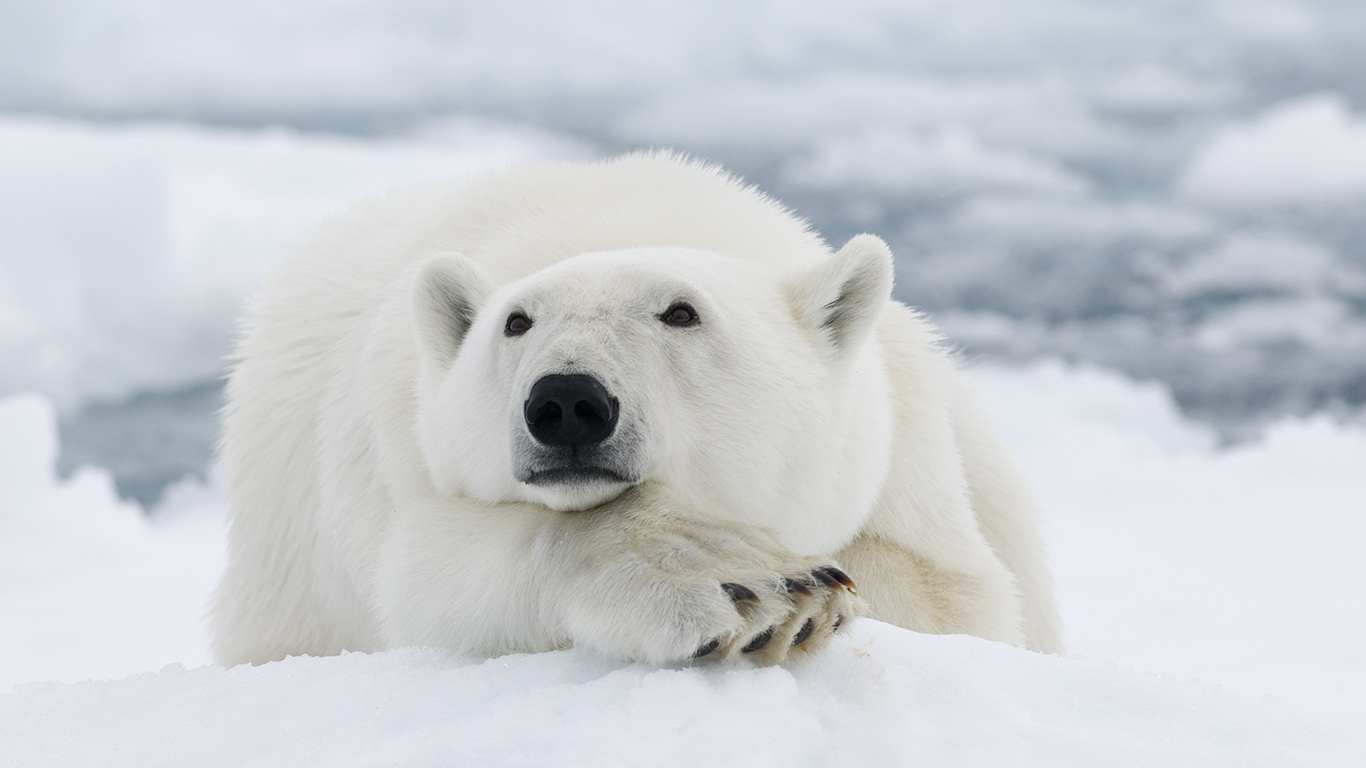
Published:
Last Updated:

If the polar bear is an international icon, Coca-Cola has something to do with the situation: It first used an image of the animal in a print ad in France in 1922, and for the next 70 years or so, polar bears showed up now and again in the soft drink’s campaigns. In 1993, the first Coke animated polar bears appeared, achieving stardom of a sort in a couple of commercials for the 1994 Olympic Games, and becoming a familiar symbols for the beverage in subsequent years.
Of course, the amiable, slightly goofy polar bears of Coca-Cola fame don’t have a lot in common with, so to speak, the real thing. In a campaign from 1996, for instance, a chubby polar bear cub is shown sharing a star-covered red ball and a bottle of Coke with a seal cub — when in real life, the bear would likely be making the seal his dinner.
Though they are among the largest animals on earth, polar bears are often described as “cute,” and somehow seem less threatening than the brown or black bears from warmer climes. In fact, though, they can be dangerous beasts. While attacks on humans by polar bears used to be rare occurrences, they have been increasing in recent years. Fifteen such attacks were recorded between 2010 and 2014 alone, a record for so short a period. This appears to be happening because, as sea ice disappears through the effects of climate change, the bears spend more time on land, meaning that they come into contact with more people.
And as sea ice shrinks, polar bears have not only less room to range but also fewer opportunities to hunt for food. The U.S. Department of the Interior’s Bureau of Land Management plans to sell oil and gas drilling leases this year for 1.6 million acres of the Arctic National Wildlife Refuge, which will further drive polar bears and other wildlife out of their natural habitat.
Polar bears are remarkable animals, worth learning about and appreciating. February 27, in fact, is International Polar Bear Day, dedicated to drawing attention to the challenges polar bears face in a warming Arctic environment. In honor of the occasion, 24/7 Wall St. has assembled 20 interesting facts about these fascinating creatures.
Click here for the most fascinating facts about polar bears.
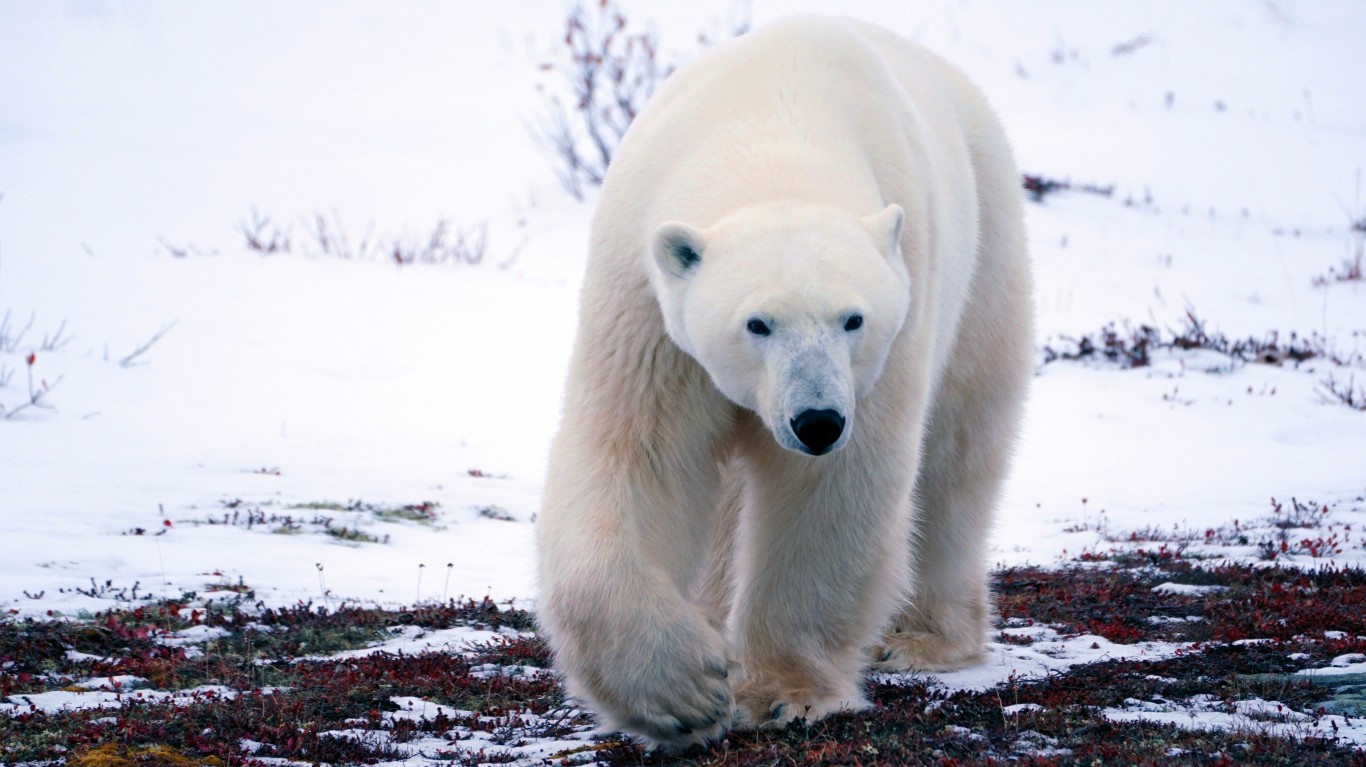
They are the world’s largest land-based carnivores.
They’re not the world’s largest carnivores by a long shot. That honor goes to the squid-eating sperm whale, which can grow to a length of 60 feet and a weight of 80,000 pounds. But on dry (or icy) land, polar bears hold the title, weighing up to 1,320 pounds and stretching as much as eight-and-a-half feet from nose to tail.
[in-text-ad]
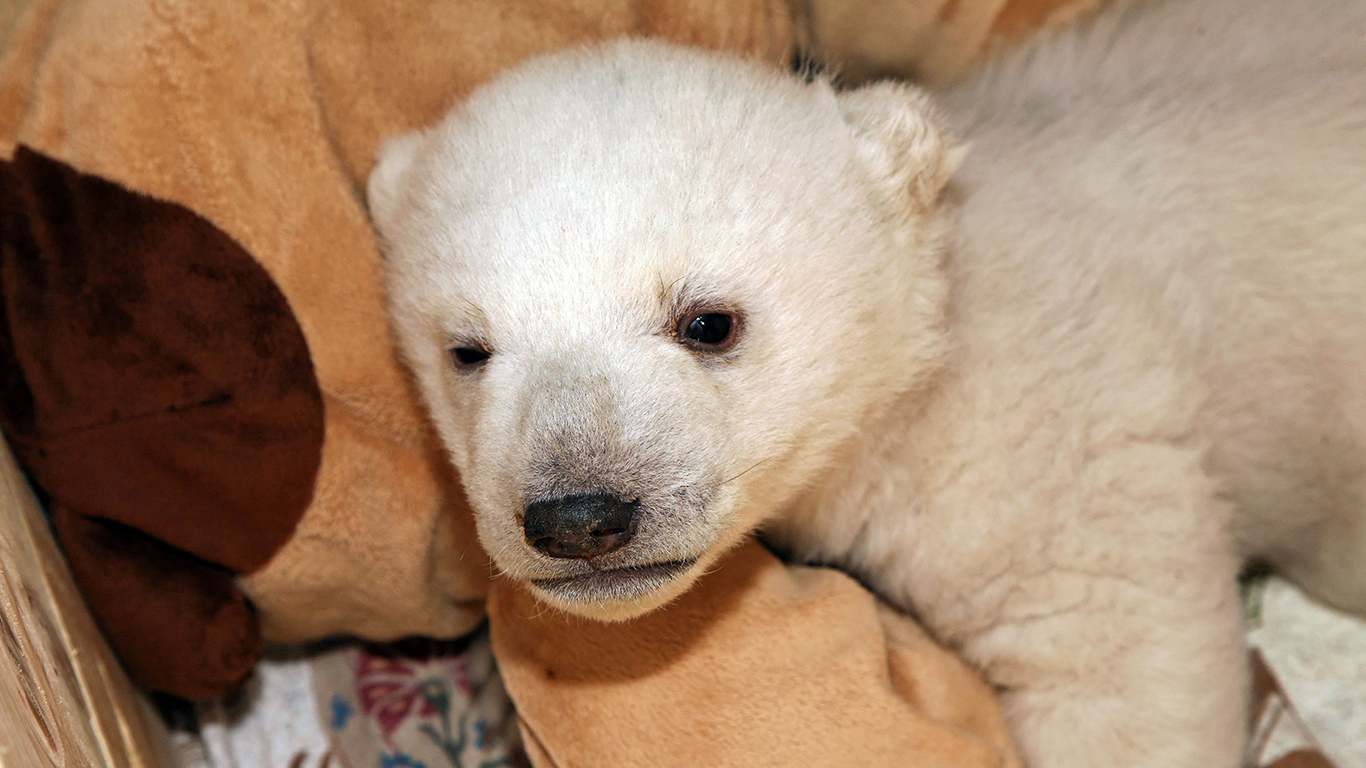
Their cubs weigh only about a pound at birth.
Polar bear cubs are tiny at first, not much more than a foot long, and blind and toothless. They grow fast, however, nourished for at least 20 months by their mothers’ very rich milk. It has a fat content of 31% to 35%, the highest of any bear species (cow’s milk is typically only 3% to 4% fat).
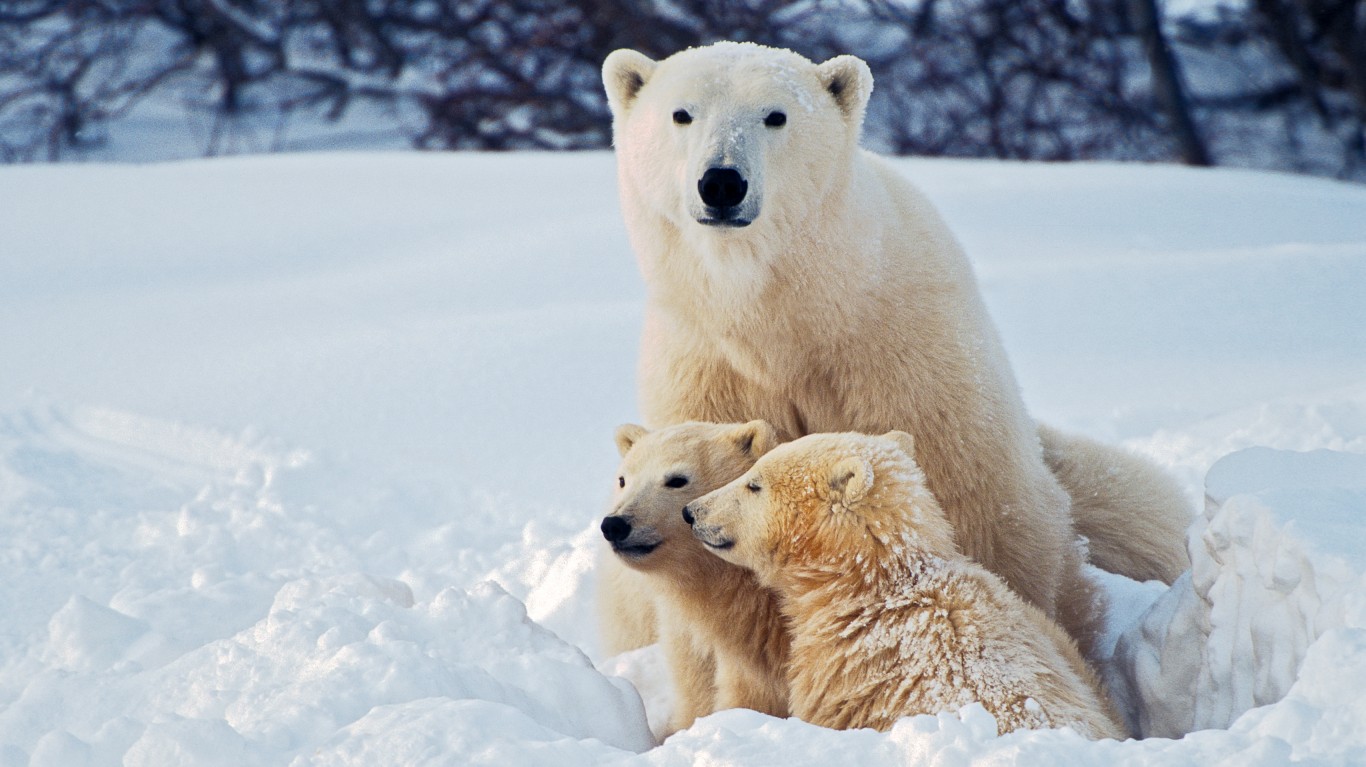
Twins run in their families.
Mother polar bears give birth to anywhere from one to three cubs at a time, with twins being the most common. In 2003, Canadian researchers discovered a rare pair of identical twin polar bear cubs.
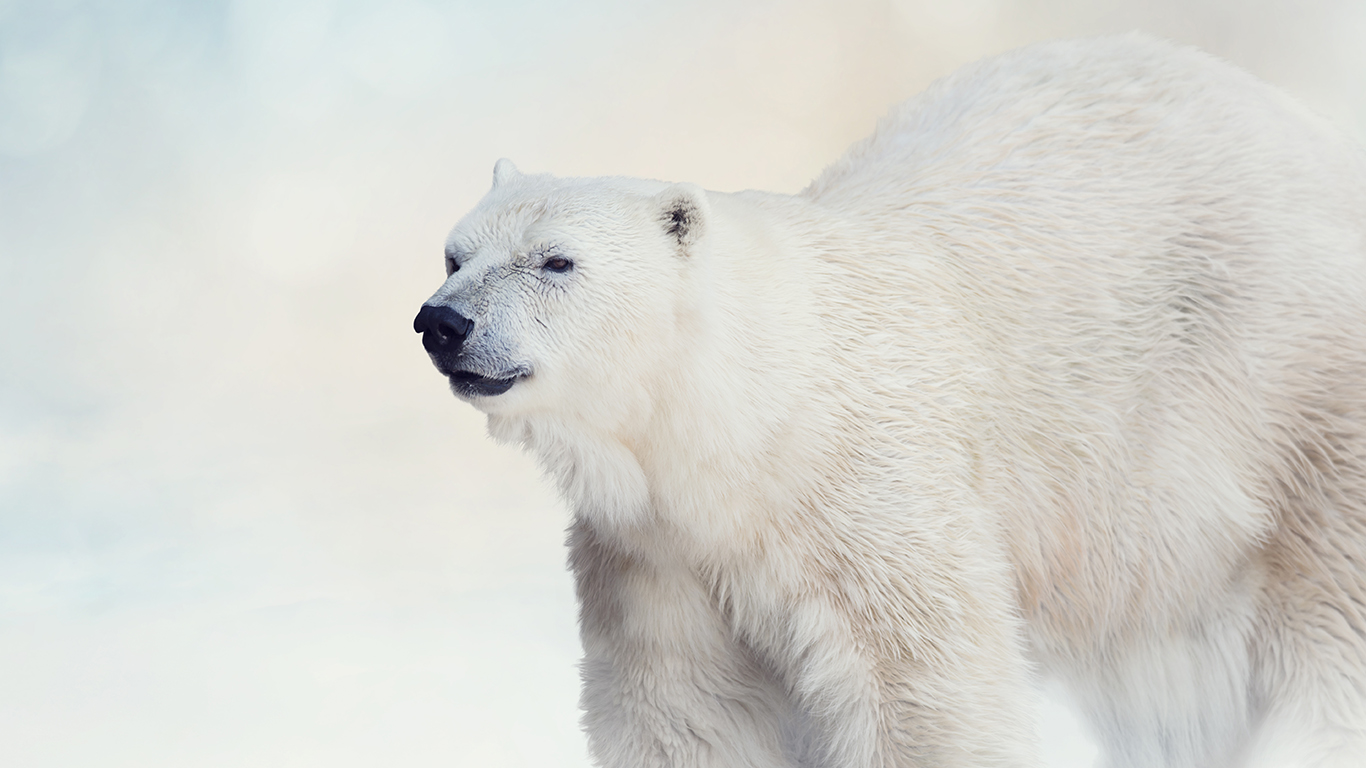
Their coats aren’t really white.
The shafts of hair on a polar bear are hollow and transparent, but they appear white because the air spaces in each hair scatter light of all colors, and our eyes see white when all visible wavelengths of light are reflected. The skin underneath the hair is actually black.
[in-text-ad-2]
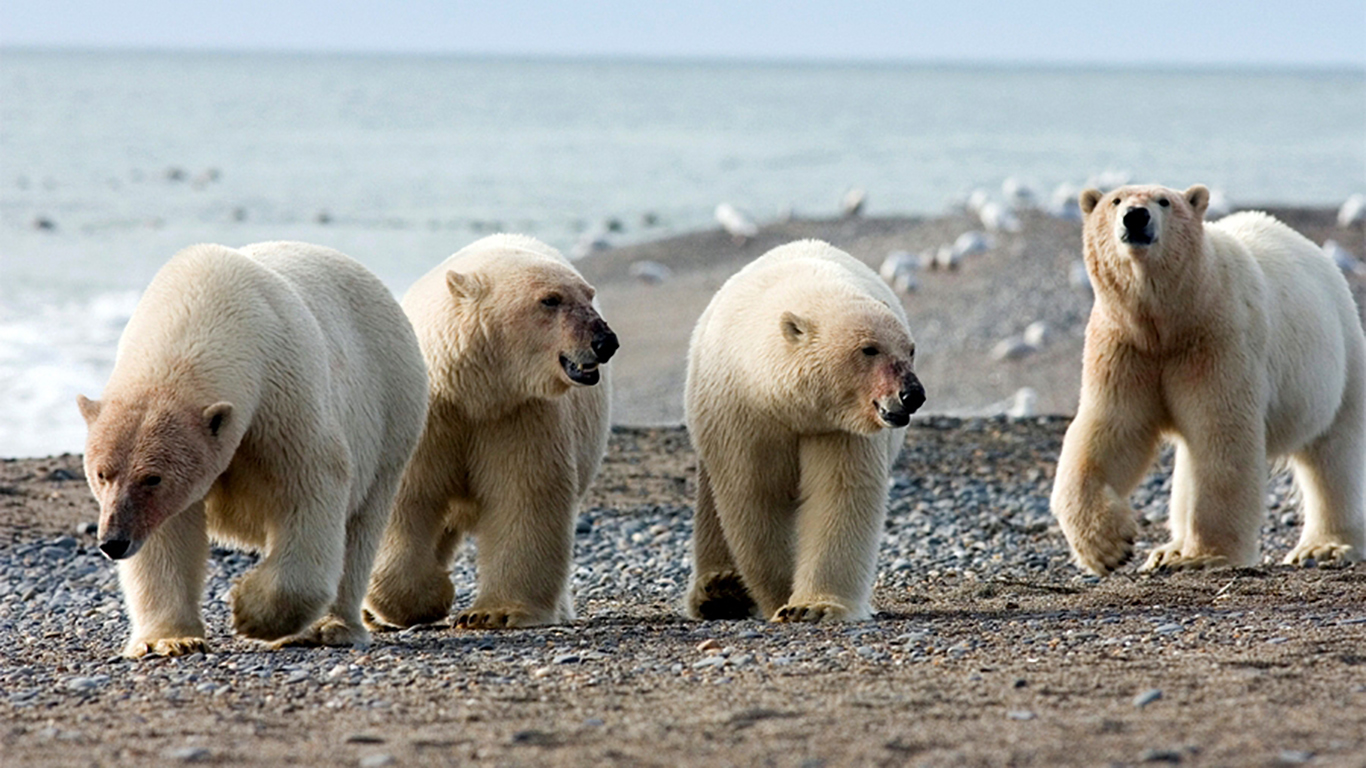
Scientists divide the world’s polar bear population into 19 units or sub-populations.
According to the Polar Bear Specialist Group of the International Union for Conservation of Nature (IUCN), the polar bear population of one of these irregularly shaped and variously sized units, Southern Beaufort Sea, bordering Alaska and Canada’s Northwest Territories, is in decline.
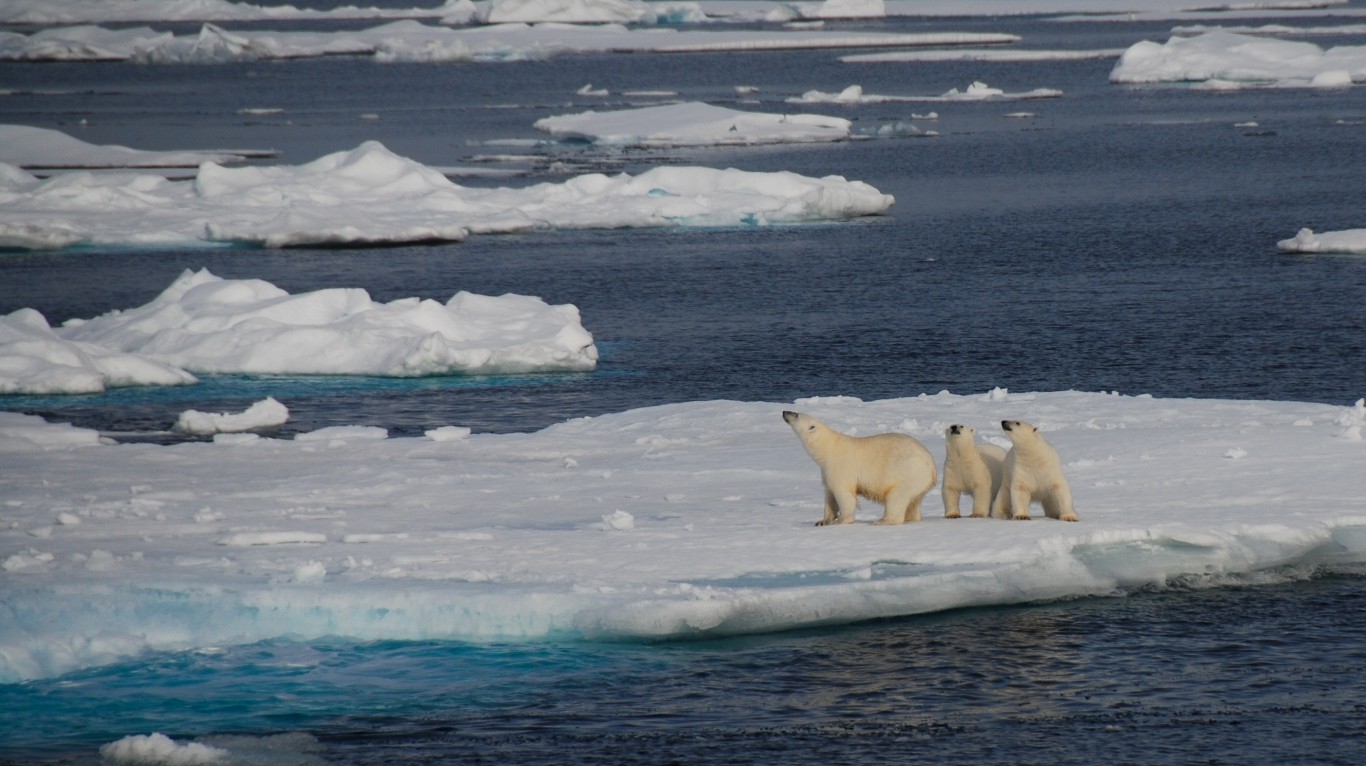
Their natural habitat range includes portions of five countries.
These countries are Canada, the United States (Alaska), Denmark (Greenland), Norway, and Russia. Polar bears are found in areas of these countries that surround the Arctic Circle, representing three continents — North America, Europe, and Asia (far eastern Russia in the latter case).
[in-text-ad]
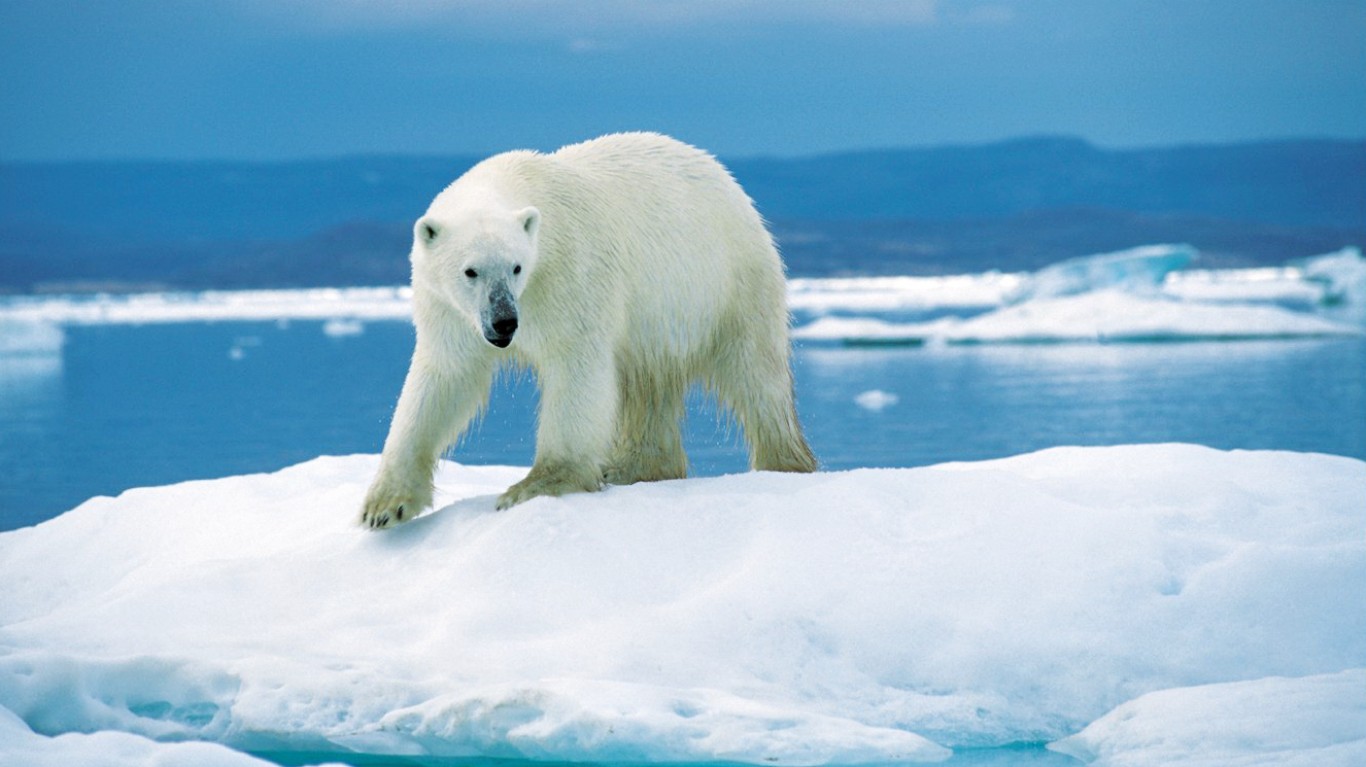
More than half of the world’s polar bears are Canadian.
Some 13 of the 19 sub-populations identified by scientists are found in Canada. These account for 60% of the total global polar bear population.
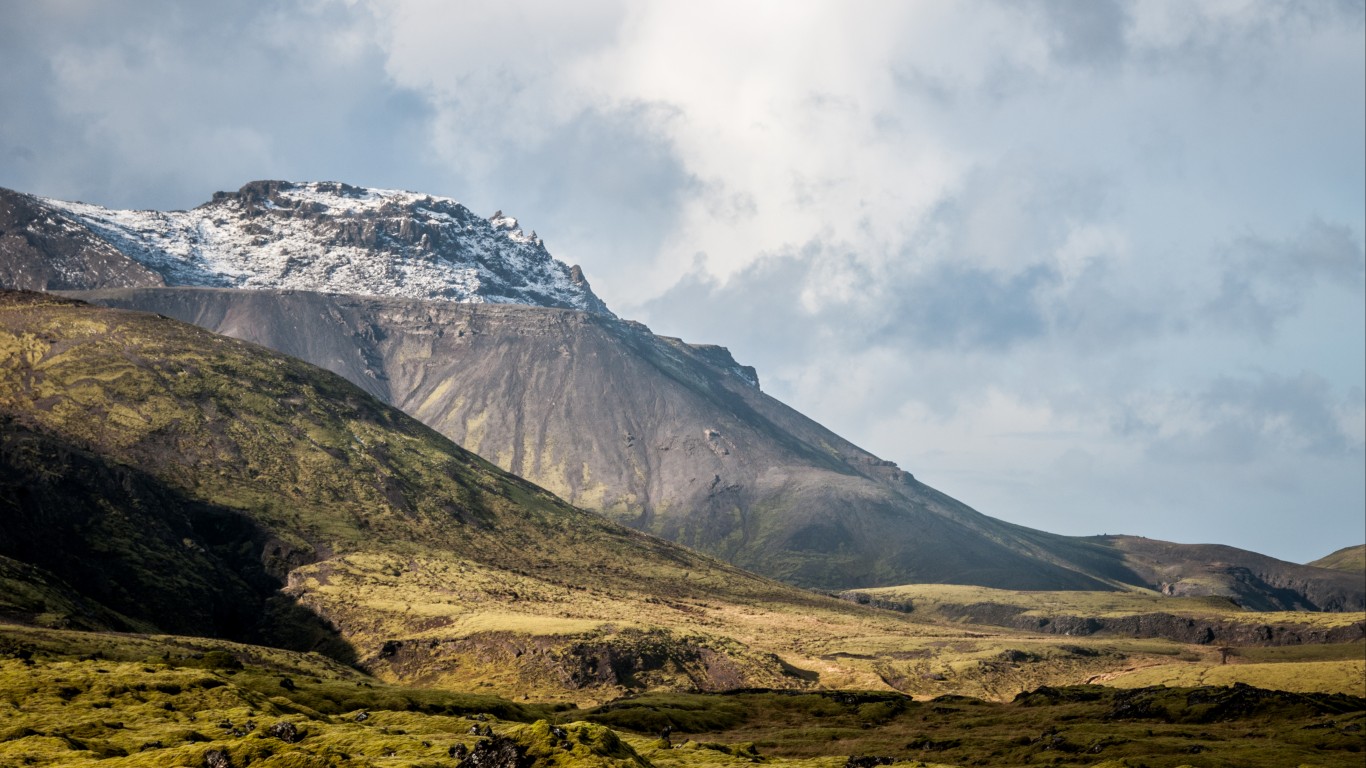
They have been known to visit Iceland, which doesn’t end well for them.
Polar bears aren’t native to Iceland, but over the centuries at least 500 documented references to them have been published. The animals apparently float over on icebergs from eastern Greenland. In 2008, a working group established by Iceland’s environment minister decided that the intruders should be killed, citing three arguments: they pose a threat to humans and livestock; they come from an area with healthy polar bear stocks that can withstand the loss of a bear now and then; and the cost of rescuing one could be as much as $85,000.
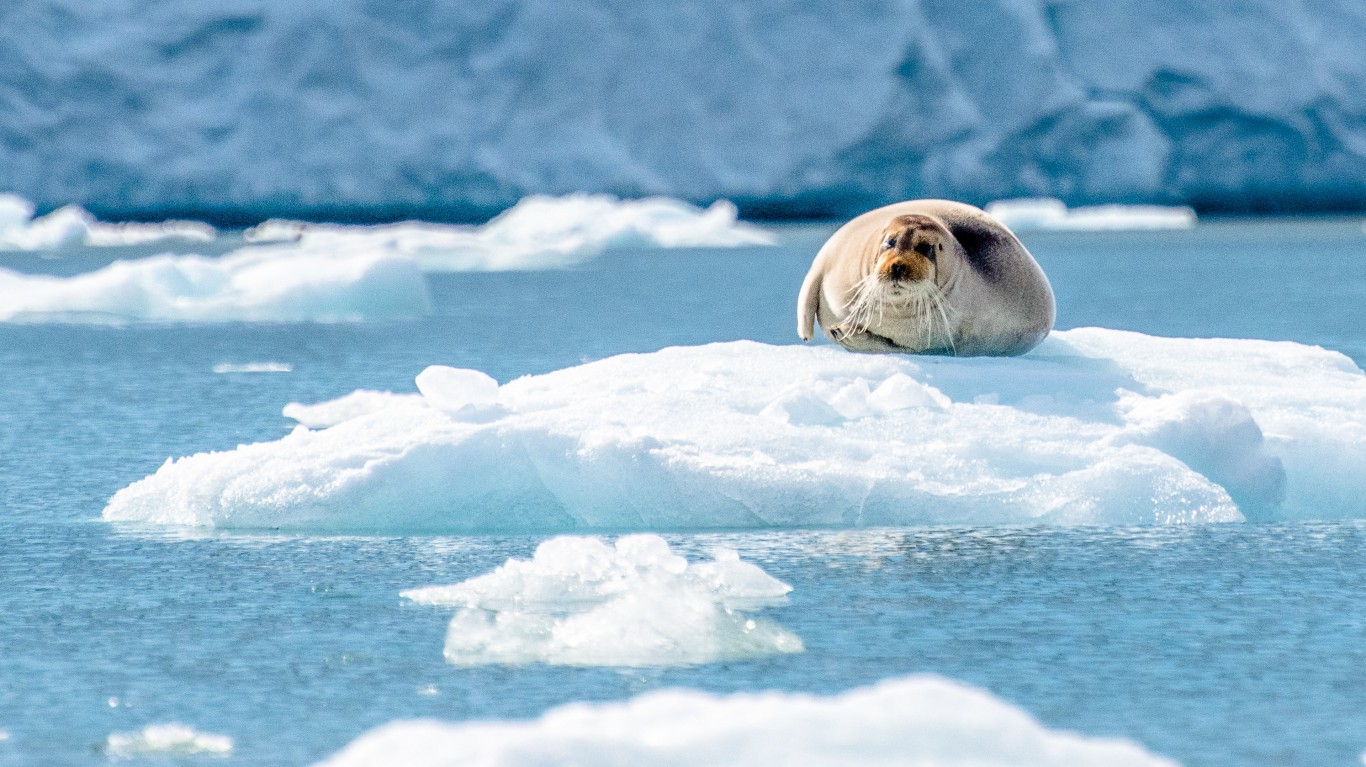
Their favorite food is seal.
It is estimated that polar bears spend about half their time hunting for food. Though they have a predilection for ringed and bearded seals — seals have a high fat content, which the bears need for survival — they’ll also eat other varieties of seals, whales, walruses, reindeer, small rodents, fish, and human garbage, among other things.
[in-text-ad-2]
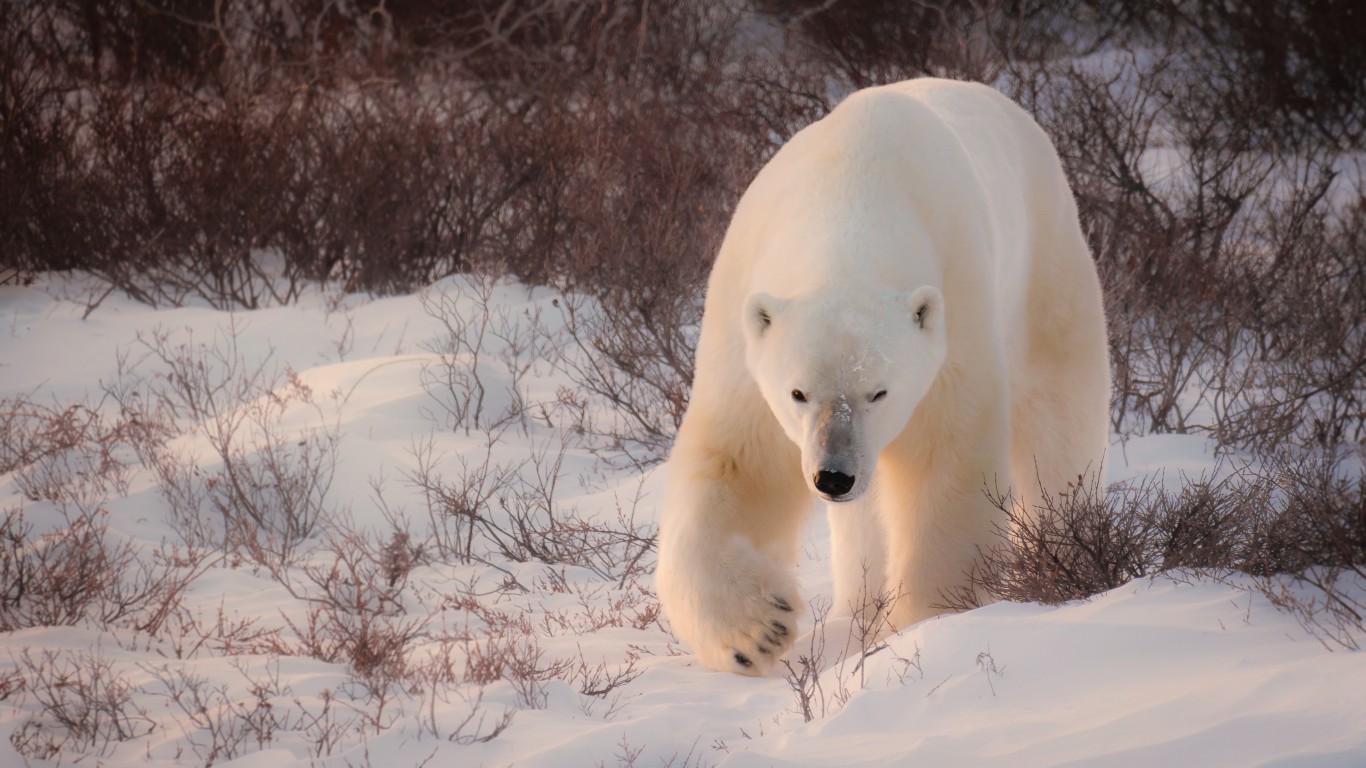
Sometimes they’re cannibals.
In the summer and fall, when seals spend more time in the water or in areas beyond the reach of polar bears, the bears sometimes resort to cannibalism — typically with large adult males eating cubs or smaller bears. Some scientists believe that the decline in sea ice due to climate change will only make the practice more widespread.
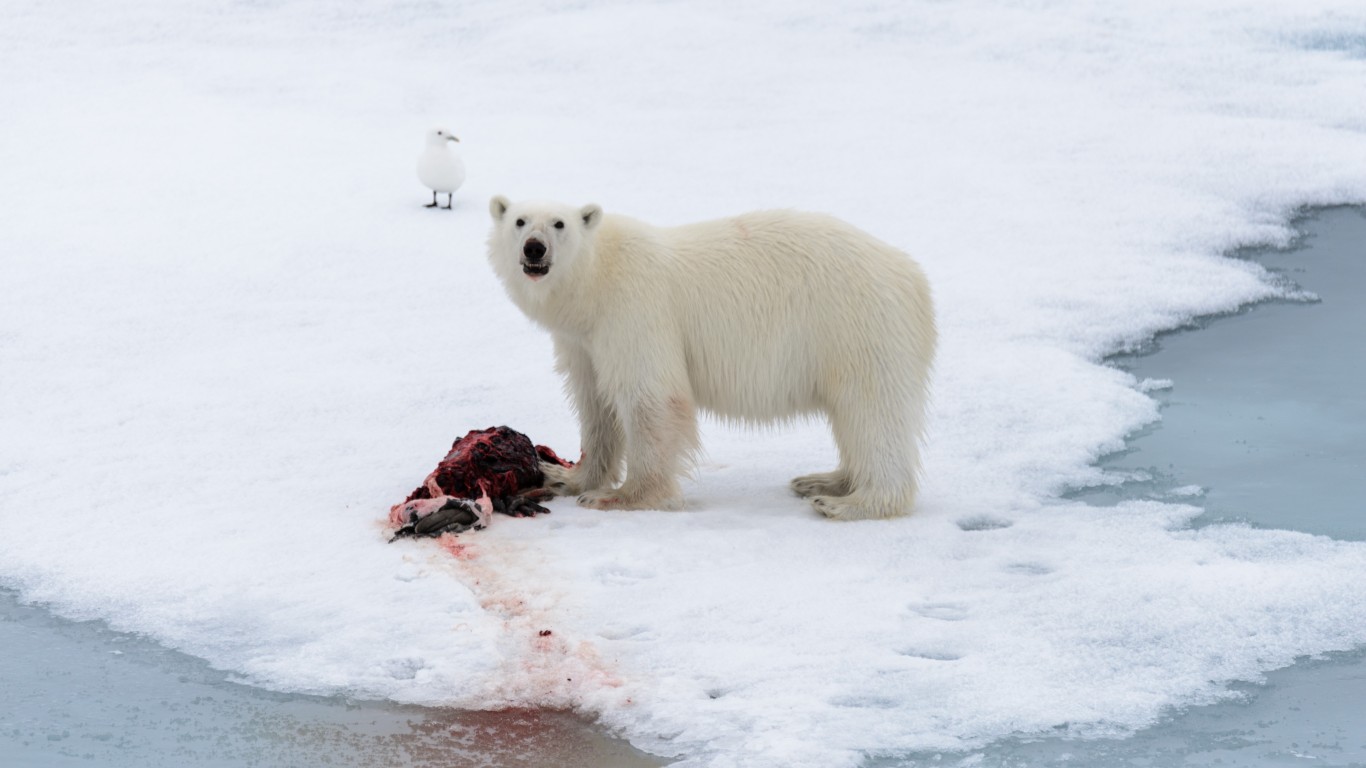
They don’t have to drink water.
Polar bears get all the liquid they need from the seals and other animals they eat, so have no need to drink water.
[in-text-ad]
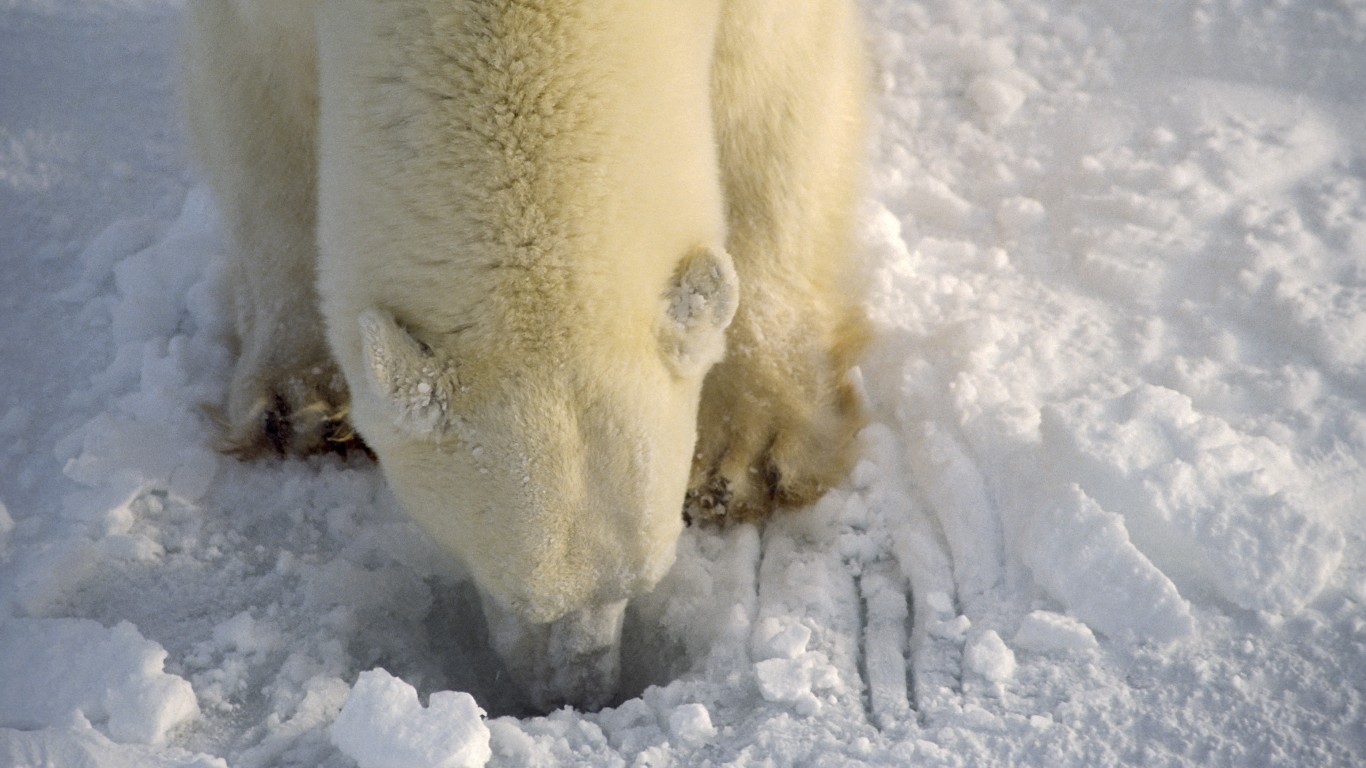
Their sense of smell is among the sharpest of any animal.
It is said that they can smell a seal from 20 miles away, and that a polar bear will walk 100 miles to follow the scent of a female in heat.
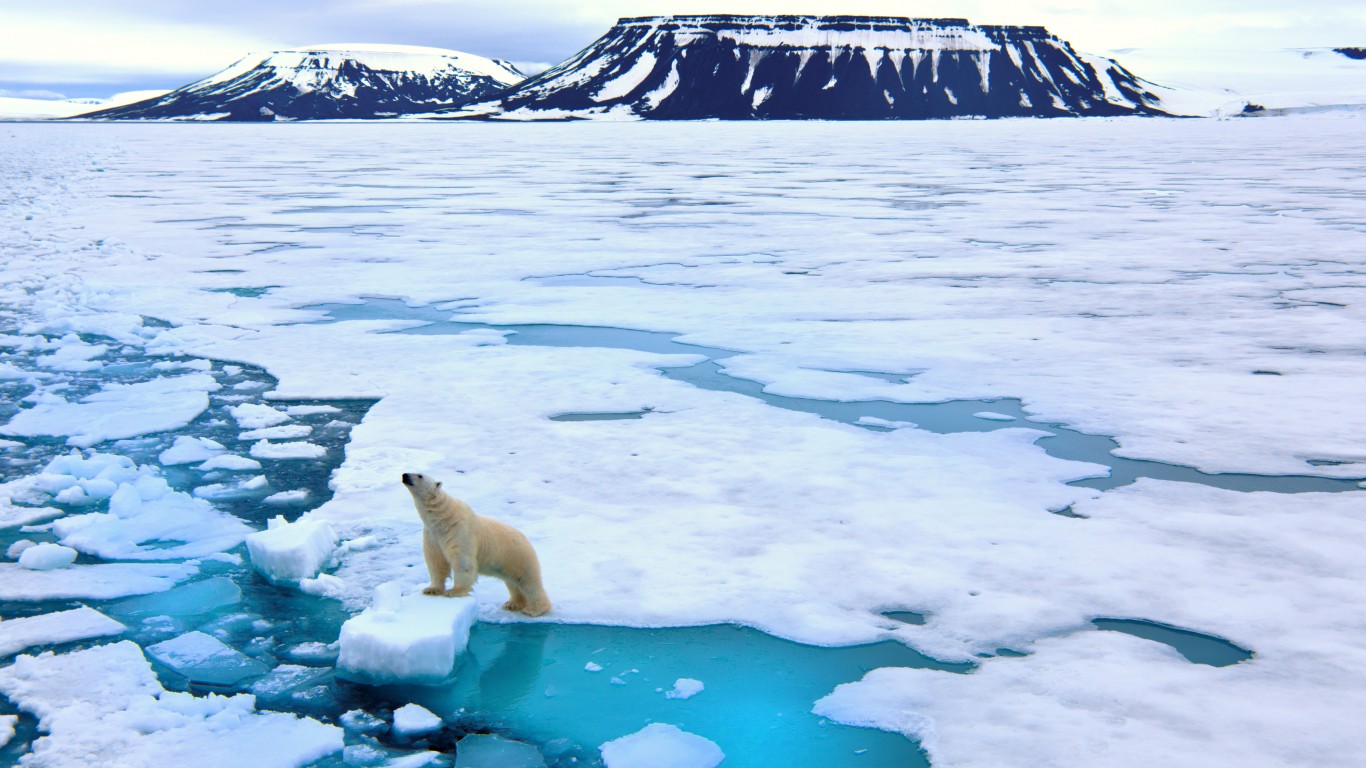
They are considered a threatened species by the U.S. government.
In 2008, the polar bear was listed as a threatened species under the U.S. Endangered Species Act. Environmental factors, including the effects of climate change, have contributed to their decline, as well as the bears’ low natural reproduction rate. The global population of the animals is projected to decline 30% by 2050.
[in-text-ad-2]
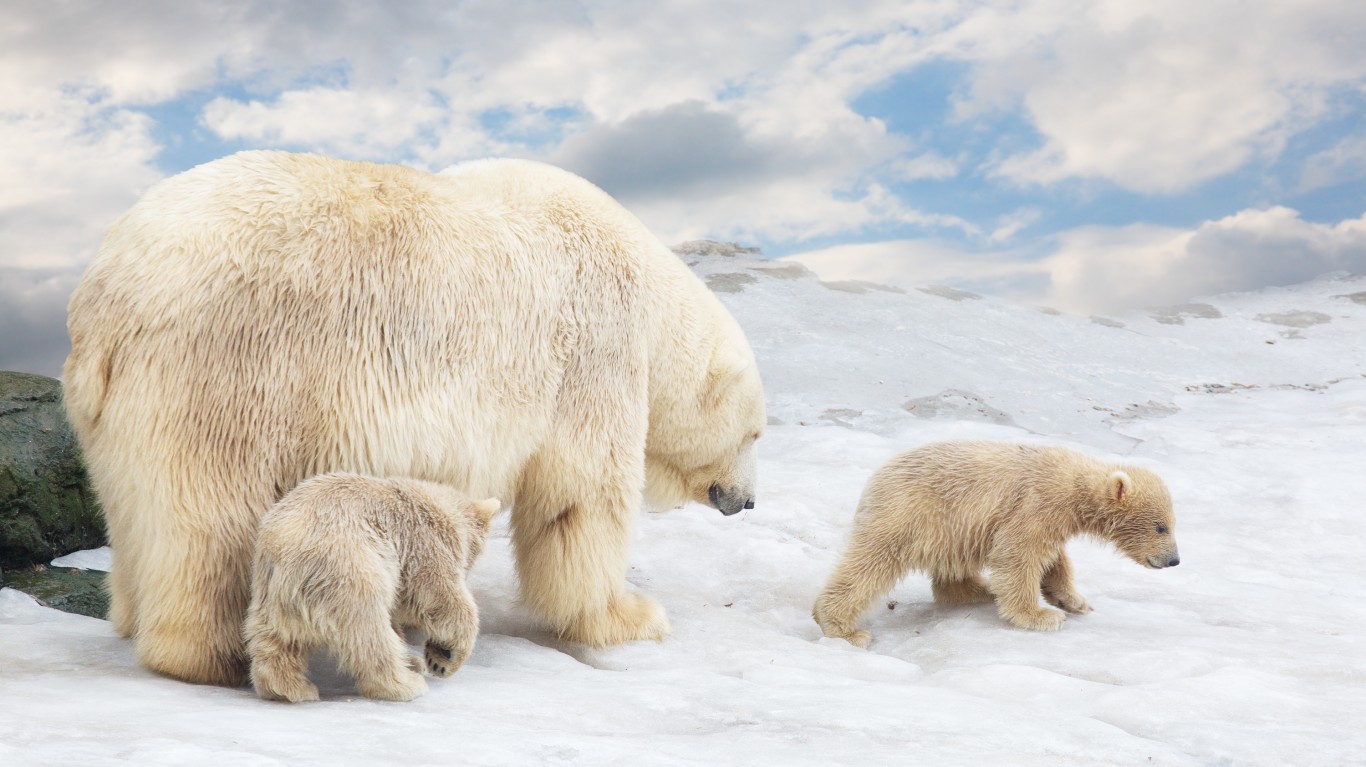
They don’t hibernate.
Unlike other bear species, polar bears don’t shut down and go to sleep in the winter — nor do they, as was once believed, enter into a state of walking hibernation in which their body temperatures drop.
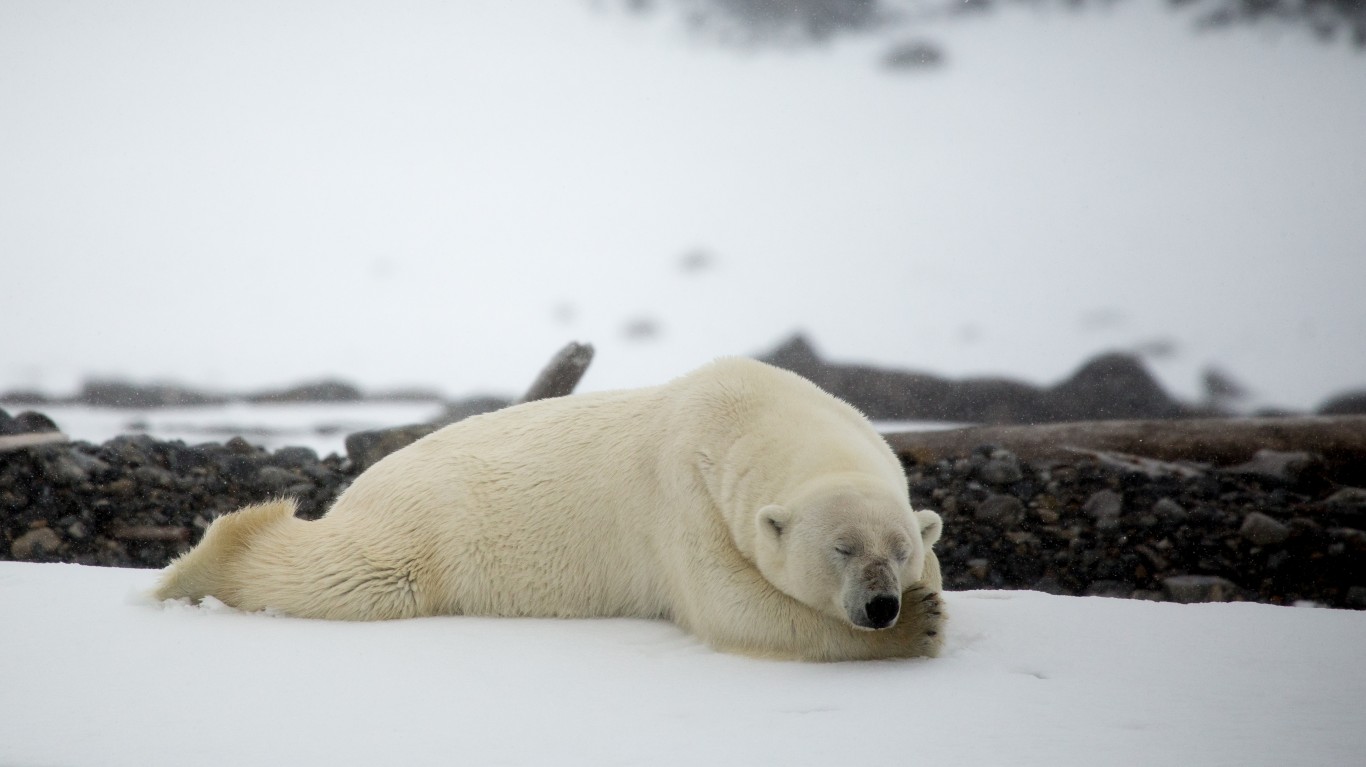
They sleep a lot.
Polar bears might not settle down for long winter naps like other bear species, but they get plenty of shuteye. Besides sleeping for seven to eight hours each night, they often nap during the day, especially after a meal or a swim or if the weather is too hot or too cold.
[in-text-ad]
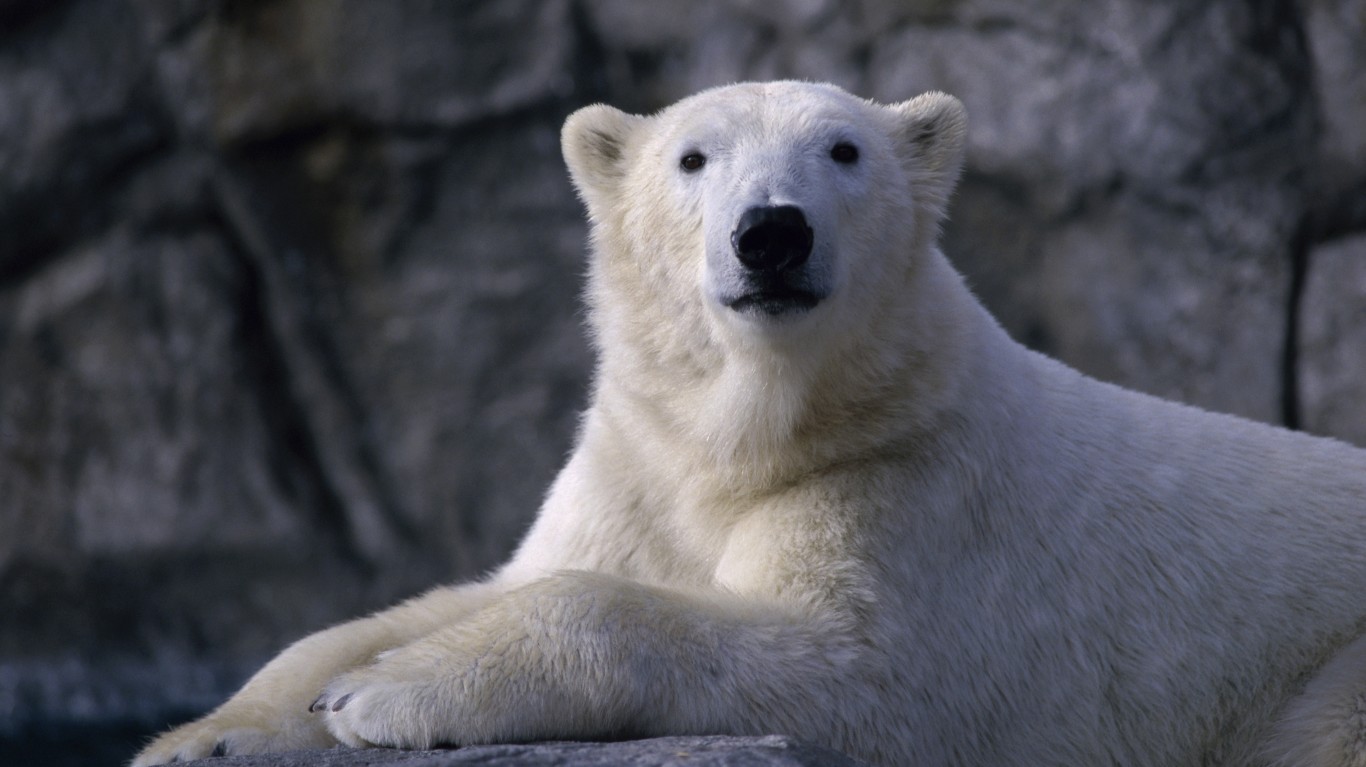
They can live longer in captivity than in the wild.
Though polar bears can live to the age of about 30 in the wild — 32 is the record — only a small percentage of them make it past 18 years. They tend to do better in captivity, however: The oldest known polar bear in a zoo made it to 45.
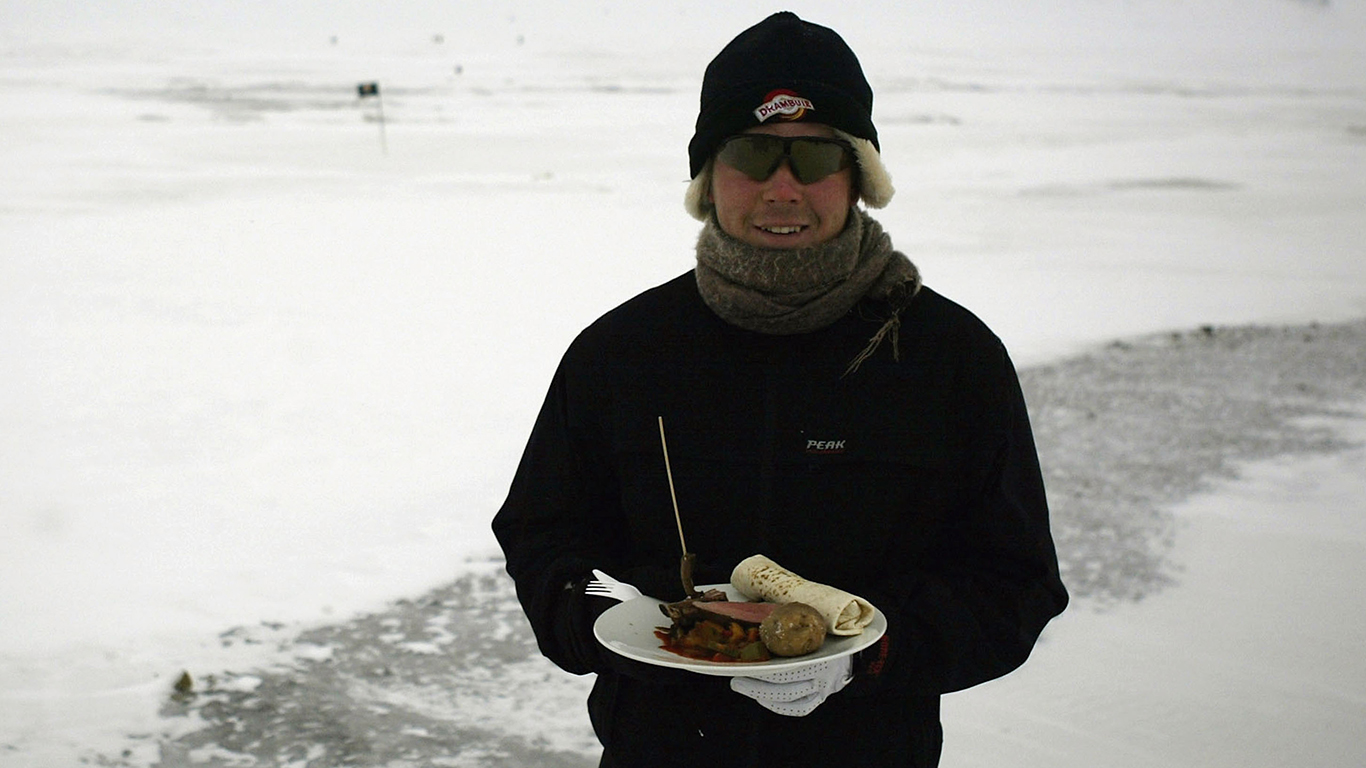
Their meat is said to taste good.
Native peoples in areas where polar bears live have traditionally hunted — and eaten — them. (They abide by a quota system, limiting the number of animals they can hunt.) Nathan Myhrvold, the Microsoft chief technology officer and prolific inventor turned cookbook author, sampled braised polar bear meat prepared by a local on a trip to Greenland and noted that “it was coarse textured meat, probably from the leg, and…it was delicious.”
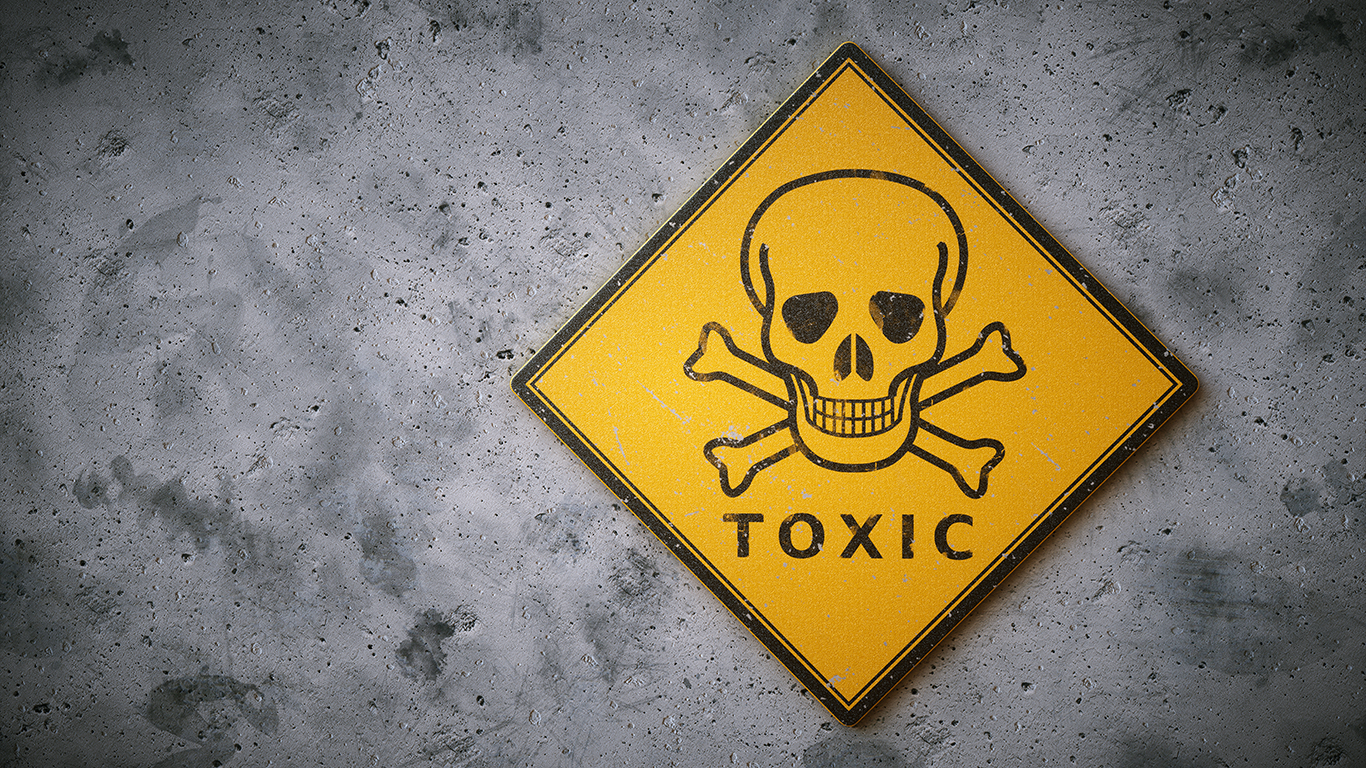
Their liver is toxic.
As with seals and walruses, the livers of polar bears contain an exceedingly high dose of Vitamin A. A healthy adult can tolerate 10,000 units of the vitamin; a pound of polar bear liver contains as much as nine million units — so even a small portion can be toxic. Excessive consumption of the vitamin affects the central nervous system, and can cause liver problems, blurred vision, and peeling skin, among other issues, and sometimes even death.
[in-text-ad-2]
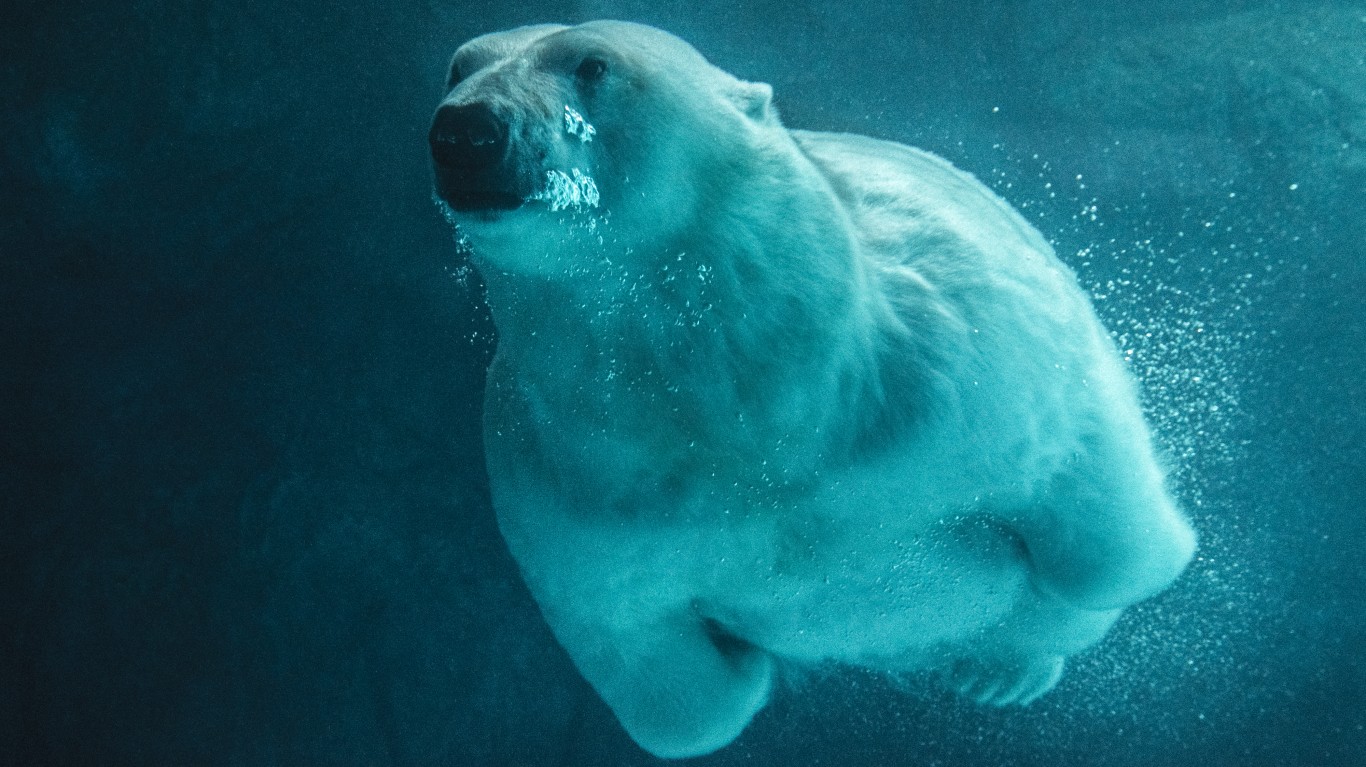
They can swim as fast as Michael Phelps.
Polar bears are very good swimmers, able to achieve a speed of about six miles per hour. Olympic gold medalist Michael Phelps matched that speed in the 2016 Summer Games, in the 200-meter individual medley. The difference is that polar bears can maintain their speed over long distances. They can cover more than 60 miles at a time in icy water, and a female polar bear was once tracked swimming 400 miles in one go in the Bering Sea, then resting for a few hours before continuing on for another 1,100 miles.
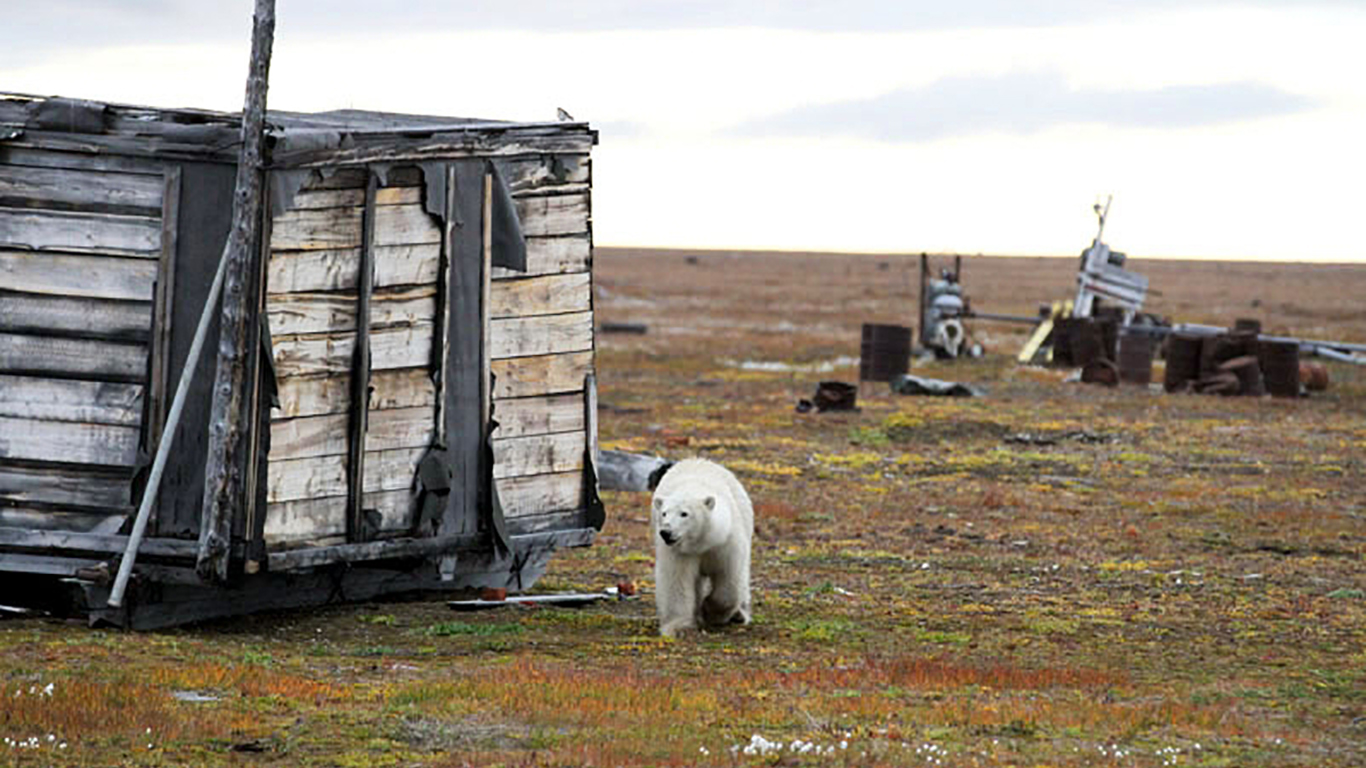
They have invaded a Russian military outpost, and residents are afraid.
More than 50 polar bears have been roaming the streets of the 2,000-person Russian Arctic military settlement of Belushya Guba since December. Shifts in sea ice due to climate change may or may not be a factor, but the community is scared, and people are staying indoors as much as possible.
Retirement planning doesn’t have to feel overwhelming. The key is finding professional guidance—and we’ve made it easier than ever for you to connect with the right financial advisor for your unique needs.
Here’s how it works:
1️ Answer a Few Simple Questions
Tell us a bit about your goals and preferences—it only takes a few minutes!
2️ Get Your Top Advisor Matches
This tool matches you with qualified advisors who specialize in helping people like you achieve financial success.
3️ Choose Your Best Fit
Review their profiles, schedule an introductory meeting, and select the advisor who feels right for you.
Why wait? Start building the retirement you’ve always dreamed of. Click here to get started today!
Thank you for reading! Have some feedback for us?
Contact the 24/7 Wall St. editorial team.